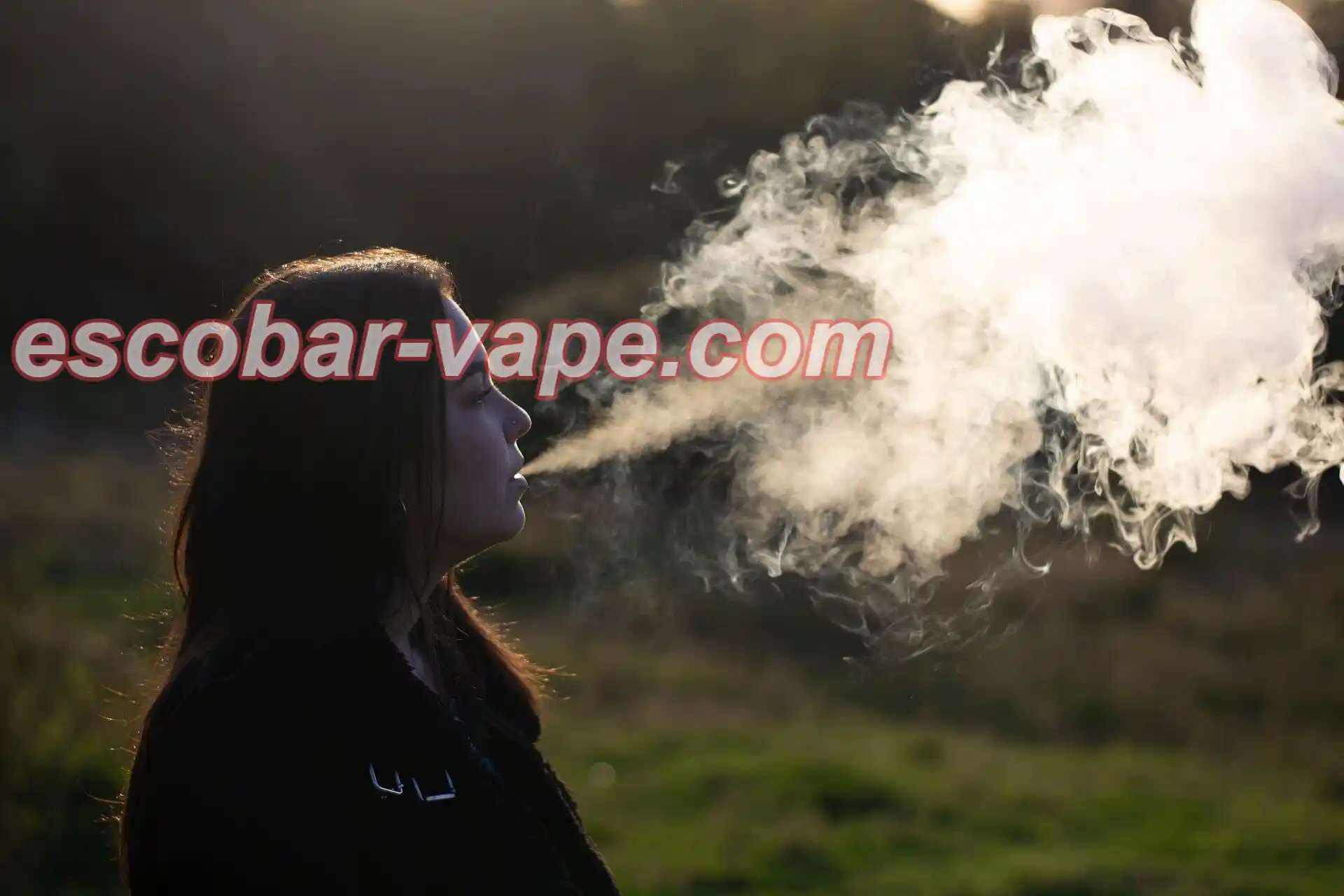New Zealand's Vape Market: How the Top Performer is Changing the Game
Successes and Challenges of New Zealand's Vape Regulation Policy
In recent years, global smoking rates have gradually declined, and vaping has emerged as an alternative smoking cessation tool. Although vaping is seen as an effective way to reduce smoking-related harm, many countries face significant challenges and pressure regarding its regulation due to health risks associated with its use, its appeal to minors, and other issues. Among the many regulatory policies worldwide, New Zealand stands out as a successful case in managing vaping. The New Zealand government has incorporated vaping management into its tobacco control strategy through a series of policy measures. These efforts have not only achieved significant smoking reduction results but also provided valuable lessons for other countries around the world.
1. Vaping Helps New Zealand's Smoking Rate Drop to 6.9%
New Zealand's vape regulation strategy has significantly reduced smoking rates, achieving impressive results year after year. According to data released by the New Zealand Ministry of Health, since vaping was legalized and widely promoted in 2019, smoking rates have consistently declined, especially among those aged 15 and older. The proportion of smokers dropped from 16.4% in 2011/12 to 6.9% in 2023/24. Notably, the pace of decline in smoking rates accelerated after 2019, which is closely linked to the popularity of vaping.
It is important to note that the increase in vaping use among adults is closely connected to the reduction in smoking rates. Data shows that among adults aged 25 to 64, the growth in vaping use has provided strong support for the decline in smoking rates. In particular, among young people aged 15 to 44, the proportion of those using vapes has surpassed that of traditional smokers, indicating that many young people have chosen vaping as an alternative to smoking.
The rise in vaping use has not only changed smoking habits but also had a positive impact on the health of younger groups. Data indicates that vaping use among 15 to 24-year-olds has significantly increased, and smoking rates have shown a clear downward trend. Vaping has become the preferred method for many young people to quit smoking or avoid starting in the first place. This change in New Zealand suggests that with proper guidance and regulation, vaping can effectively replace traditional smoking behavior, helping to achieve smoking reduction goals.
2. New Vape Regulations Effective from October 1, 2024
To further strengthen vaping management, the New Zealand government will implement a new set of regulations starting October 1, 2024. These new regulations mark another important step in New Zealand's approach to vaping control.
One of the most significant changes is the nationwide ban on the sale of disposable vapes. This regulation means that disposable vapes, which are convenient but also highly attractive to minors, will no longer be available on the market. Additionally, to strengthen control over sales to minors, the government has significantly increased penalties for related violations. Retailers selling vapes to minors will face fines of up to NZD 100,000 (approximately USD 60,000). Other violations of the regulations will attract fines of up to NZD 10,000 (approximately USD 6,000). This penalty structure reflects the government’s strong commitment to protecting young people from the harms of vaping.
Furthermore, all vaping products and devices currently on sale must comply with the new regulations, particularly regarding technical requirements for devices. The new rules stipulate that vape devices must feature removable batteries and child-safety mechanisms, or they will be prohibited from sale. This implementation further strengthens safety regulations around vaping products, reducing potential hazards.
At the same time, the government has also increased control over vape packaging and product descriptions. For example, vape product packaging will no longer be allowed to use cartoon images or toy-like designs, which could mislead young consumers. Descriptions of flavors will also be strictly regulated to reduce the appeal of vaping to teenagers.
Additionally, the New Zealand government has introduced restrictions on the location of vape retail outlets, requiring specialist vape stores (SVRs) to avoid being situated near schools, community centers, or other places frequented by young people. This measure not only prevents vape shops from attracting minors but also promotes the sale of vaping products in appropriate areas, ensuring a healthy and orderly market.
These new regulations represent a further tightening of New Zealand’s approach to vaping management. The goal is to reduce the potential harm vaping could cause to young people through legal measures while laying the foundation for the healthy development of the vaping industry.
3. New Zealand’s Commitment to a Smoke-Free 2025
New Zealand’s smoking reduction goals go beyond simply reducing smoking rates. The government has set a more ambitious target—achieving a "Smoke-Free 2025" by 2025. New Zealand’s Deputy Minister of Health, Dr. Casey Costello, stated that the government is committed to reaching a nationwide smoke-free goal by 2025, with approximately 80,000 people expected to successfully quit smoking by then.
The core of the "Smoke-Free 2025" initiative is to reduce smoking rates through multiple approaches, including stronger vaping policies, smoking regulations, public education, and health promotion efforts. Achieving this goal would mean tobacco use in New Zealand would become increasingly rare, reducing the societal harm caused by smoking and significantly improving public health levels.
However, Costello emphasized that while "Smoke-Free 2025" is an important milestone, it is just the beginning of New Zealand’s tobacco control efforts. The government must remain vigilant to ensure that the country maintains low smoking rates in the long term, particularly to prevent a resurgence of smoking among young people. Additionally, those who have quit smoking need ongoing support to prevent them from relapsing into smoking or using vapes.
4. New Zealand’s Vape Export Value Sees Significant Growth
New Zealand has not only achieved significant domestic success in smoking control but has also seen impressive economic growth in the vaping industry. Data from 2024 indicates that New Zealand’s vape export value increased by more than 50% year-on-year, reaching USD 61.55 million. This highlights the growing potential and market demand for New Zealand-made vaping products.
This growth is driven not only by increased global demand for New Zealand’s vaping products but also by the innovation and quality of New Zealand’s vaping industry. As export values rise, New Zealand’s vape industry is experiencing a golden period of development. More vape shops are opening across the country, and the number of specialist vape retail outlets has surged, surpassing even the number of McDonald's and KFC fast-food chains.
This phenomenon reflects the rapid expansion of the vape market in New Zealand. As product diversification and market demand continue to grow, vaping has become one of the emerging industries contributing to New Zealand’s economy.
5. Global Impact and Lessons Learned
New Zealand’s vape regulation policy has not only achieved significant success domestically but has also attracted global attention and become a model for other countries. Many countries are now referring to New Zealand’s experience when formulating their own vape policies, particularly in areas such as protecting minors, controlling the sale and promotion of vaping products, restricting product flavors, and combating the illegal market.
Countries such as Australia, the UK, and Canada have been continuously adjusting and refining their vaping policies, with many adopting strategies similar to New Zealand's, such as enhancing protection for minors and restricting vape advertising and promotions. This shows that New Zealand’s successful experience offers valuable lessons for global tobacco control efforts.
6. Public Health Campaigns and Education
In addition to its regulatory measures, New Zealand has placed a strong emphasis on public health campaigns and education to support its vaping and smoking reduction strategies. The government has invested in comprehensive public awareness programs that aim to educate the population about the health risks of smoking and vaping, while also promoting smoking cessation tools, including vaping as a less harmful alternative for those trying to quit.
Programs such as "Smokefree 2025" and targeted campaigns in schools, workplaces, and communities are designed to discourage smoking initiation, particularly among younger generations. The government also collaborates with healthcare professionals, community organizations, and academic institutions to provide support and resources for smokers who wish to quit.
These efforts have contributed to a shift in societal attitudes towards smoking and vaping. Public awareness of the dangers of smoking is at an all-time high, and vaping is increasingly viewed as a tool for harm reduction rather than a recreational activity. However, the government remains vigilant in ensuring that the promotion of vaping as a cessation tool does not inadvertently encourage uptake among non-smokers or minors.

Furthermore, New Zealand’s commitment to equity in health means that these public health initiatives are specifically designed to address disparities in smoking rates among different demographic groups, particularly Māori and Pacific communities, where smoking rates have traditionally been higher. Tailored interventions aimed at these communities are key to ensuring that the country achieves its smoke-free target and that no one is left behind in the fight against tobacco-related harm.
These educational efforts complement the regulatory framework, creating a well-rounded approach to tobacco and vape control in New Zealand.
Conclusion
New Zealand’s success in vape regulation is evident not only in the significant reduction in smoking rates but also in the government’s policy intelligence and enforcement efforts. Through strict regulations, effective market controls, public education, and health promotion, New Zealand has become a model in the global tobacco control arena. As the "Smoke-Free 2025" goal progresses, New Zealand will continue to contribute to global tobacco control and provide valuable experiences and case studies.
